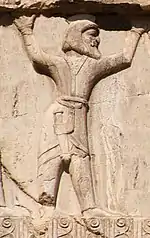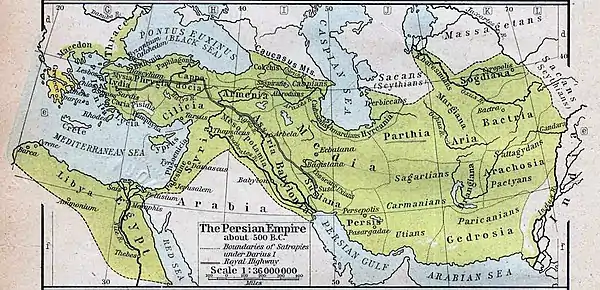Chorasmia (satrapy)
Chorasmia (Old Persian Uvârazmiya) was a satrapy of the Achaemenid Empire in Persia. Chorasmia had become part of the Achaemenid Empire before 522 BCE, and it seems to have been ruled by the satrap of Parthia.

There exists an archaeological site in Kalaly-gyr,[1] modern Kazakhstan, in a rectangular area 1,000 x 600 m surrounded by a defensive wall 15 m thick, and an Achaemenid-style palace at its center, all of which were unfinished, suggesting the Persians' departure from Chorasmia shortly after the beginning of the 4th century BC. [2] By the time of the Persian king Darius III, it had already become an independent kingdom. Its king, Pharasmanes concluded a peace treaty with Alexander the Great in the Winter of 327/328.[3] Chorasmia approximately corresponds to the modern-day region of Khwarezm.
References
- "The Ancient Chorasmian Unbaked-clay Modelled Sculptures: Hellenistic Cultural 'Impacts' on an Eastern Iranian Polity". South Asian Archaeology and Art. 1: Map. 2016.
- Yuri Aleksandrovich Rapoport, “CHORASMIA: I. Archeology and Pre-Islamic History”, Encyclopædia Iranica, Vol. 5, p. 511-516, 1991, updated 2011. [Consulted 30 April 2019).
- Chorasmia, Livius.org, Articles on Ancient History, page dates from 1997, updated 2018. [Consulted new url 30/04/2019]
